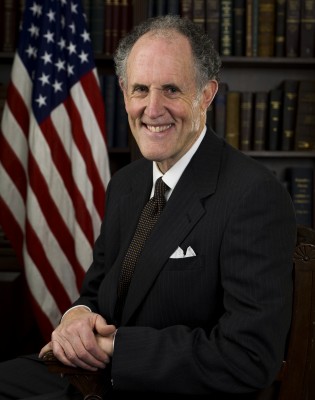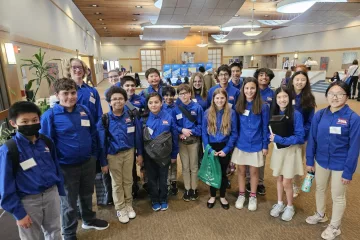 Written by: Former U.S. Senator Ted Kaufman
Written by: Former U.S. Senator Ted Kaufman
We all read a lot of headlines about how our education system needs to do more to ensure American competitiveness. It’s easy to nod your head, silently agree that something has to be done, and turn to the sports page. It’s hard to get a handle on something that abstract.
Last week I watched Delaware high school and middle school students compete with each other to build structurally strong box girder beams. Don’t know what they are? I’ll explain later. The important thing is I saw a concrete example of what has to happen to ensure our economic future.
I was a judge at the 35th annual Delaware Technology Student Association State Conference at the Delaware State Fairgrounds in Harrington. TSA’s stated mission is “to foster personal growth, leadership, and opportunities in technology, innovation, design, and engineering. Members apply and integrate science, technology, engineering and mathematical concepts through co-curricular activities, competitive events and related programs.”
TSA’s national membership is 150,000 middle and high school students and 2,500 teachers and advisers. Because I believe that one of the keys to the future in a globalized society is Science, Technology, Engineering and Math Education, I thought I’d take a look at what happens at a TSA Conference.
It was a great experience; 619 students and 55 teachers demonstrated their skills with 1,429 entries into 53 hands-on, minds-on competitive events. They came from all parts of the state. There were significant numbers of women, black, Latino and Asian students, a welcome change from a lot of STEM education events I’ve seen in the past. There were judged events in Dragster Design, Electrical Applications, Flight Endurance, Problem Solving, Structural Engineering, System Control Technology, Technology Bowl, Automotive Design and Technology, Maglev Vehicles and Model Rocketry.
The group that I helped judge took on the Structural Engineering project. Not as sexy as Model Rocketry, perhaps, but you wouldn’t have thought that if you had seen the enthusiasm of these teenagers. They worked in teams. Each team was given two-and-a-half hours, and the equipment needed to build a box girder beam out of boxwood. It simplifies things to think of the beam as kind of a bridge that will be under stress.
The challenge was to use what they had learned in mathematics, physics and applied engineering courses to build the beam that could withstand the most weight put on it.
Although a lot of different building techniques were used, in the end the box girders didn’t look that different. In fact, the rules were that the completed projects had to be exactly the same dimensions. Yet when they were put on the test equipment, the results varied all over the place.
I don’t think there could be a more concrete way to show the value of creative thinking and true innovation.
Here, the contestants had all used the same equipment, the same building materials, the same number of workers and the same amount of time. The difference in the end was the design ideas the winners had subtly built into their projects.
During the testing phase, you could feel the same sense of excitement you get at a competitive high school sports event. There were no cheerleaders or bands, and no big crowds in the audience, but these students were every bit as committed to their teams. They won’t go back to their schools and get the kind of adulation football or basketball stars receive, but I knew that, inside, they would leave with a great sense of accomplishment and pride in what they had achieved. Best of all, there weren’t any losers. The kids who didn’t win were eager to learn exactly what design ideas were successful. They will build on that knowledge the next time.
I left Harrington feeling a lot better about our future. We don’t read about them very often in our newspapers, but there are many organizations like TSA around the country that are working to make the United States a leader in innovation. That is going to keep Americans working at good-paying jobs in an expanding and healthy economy.


